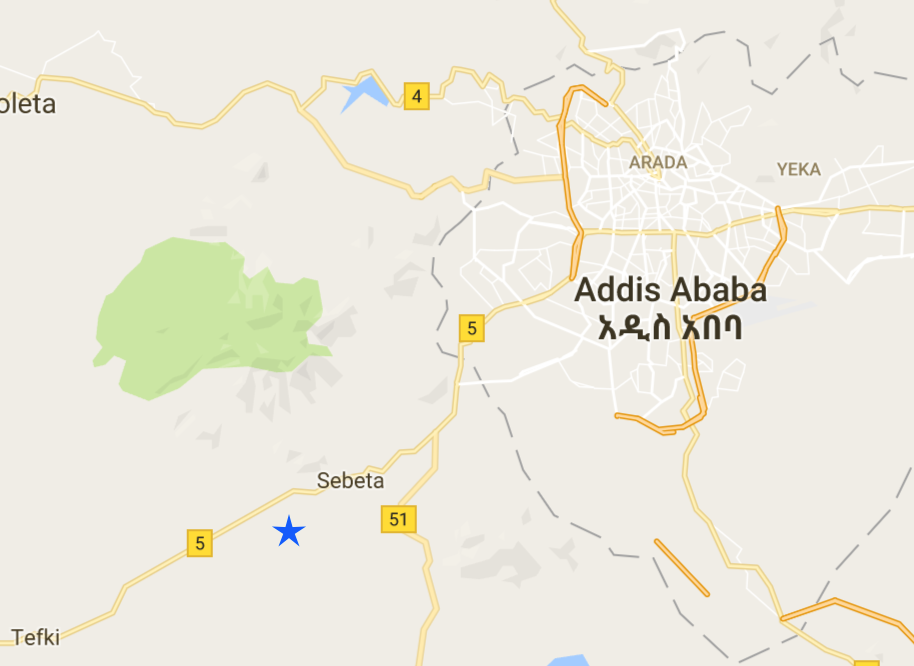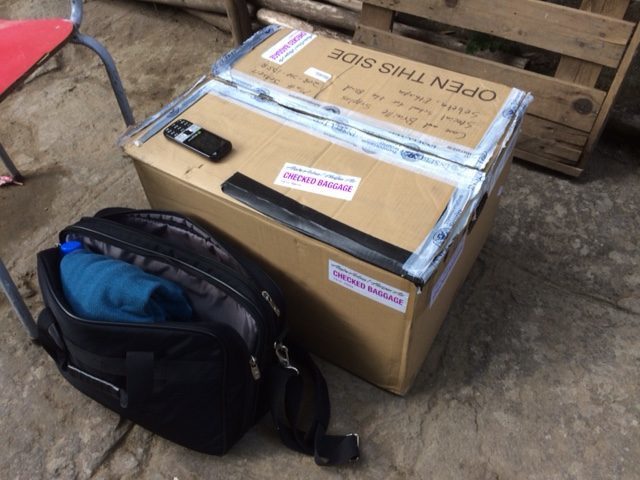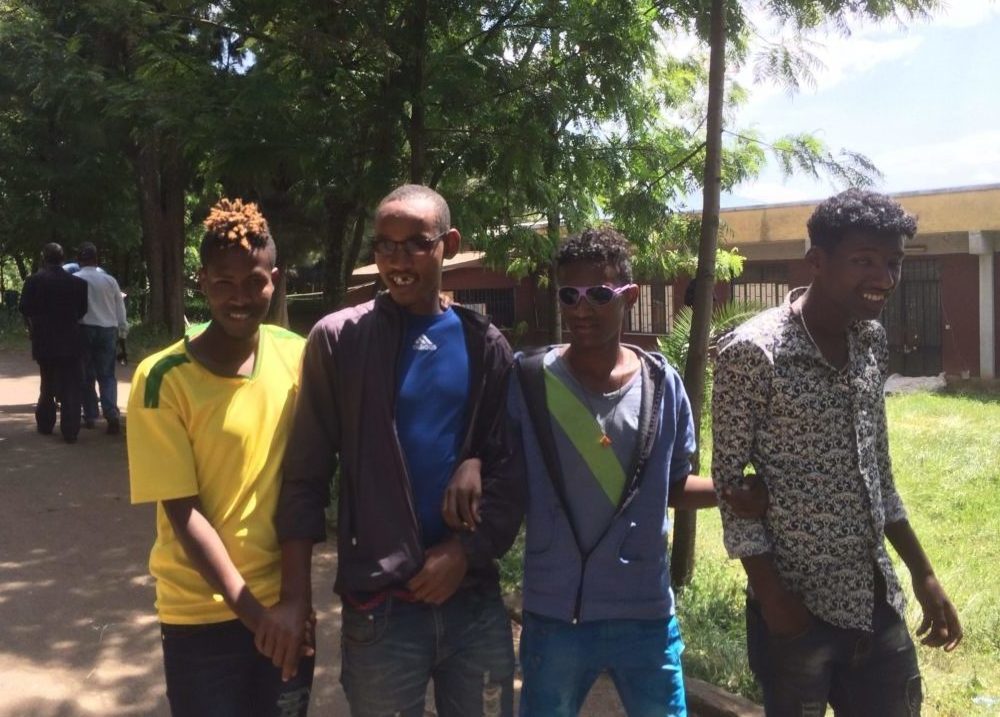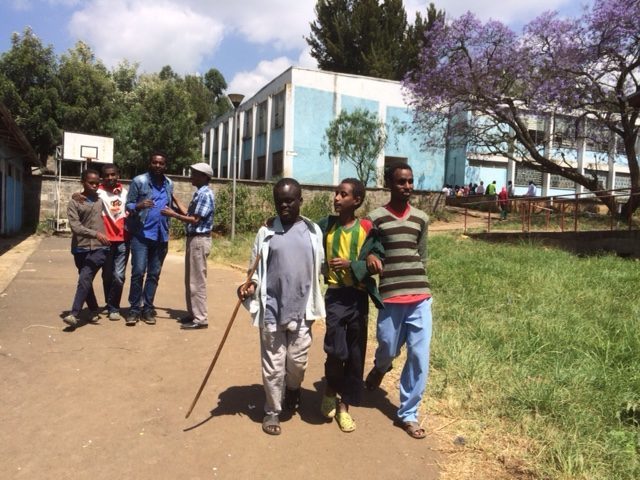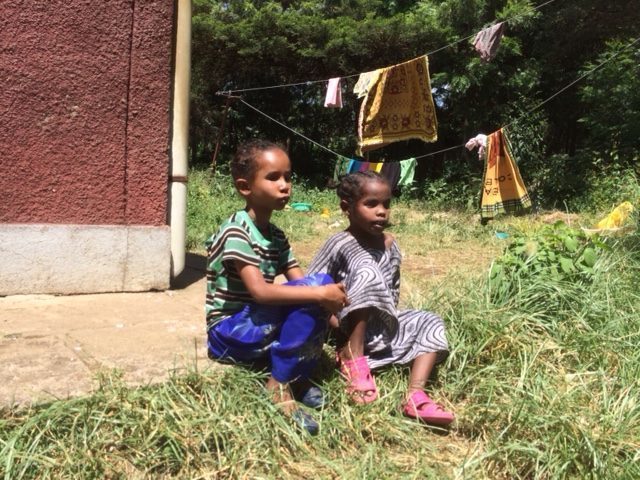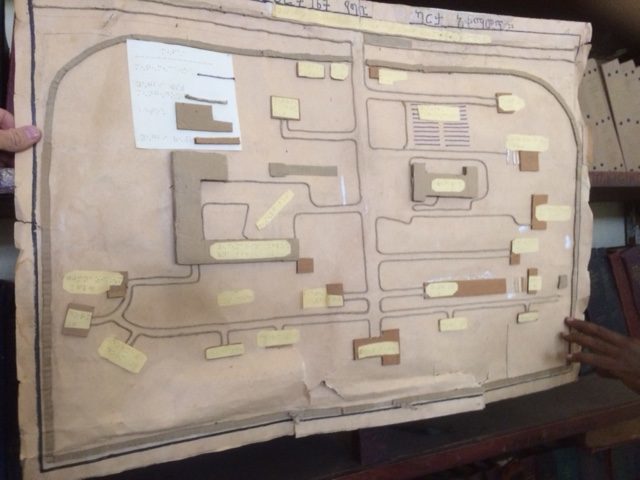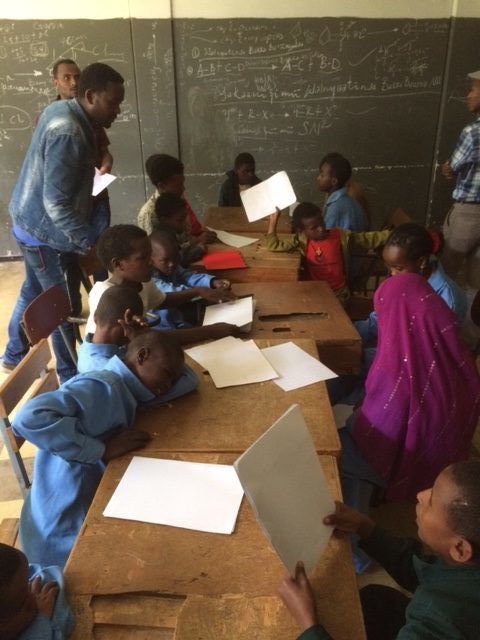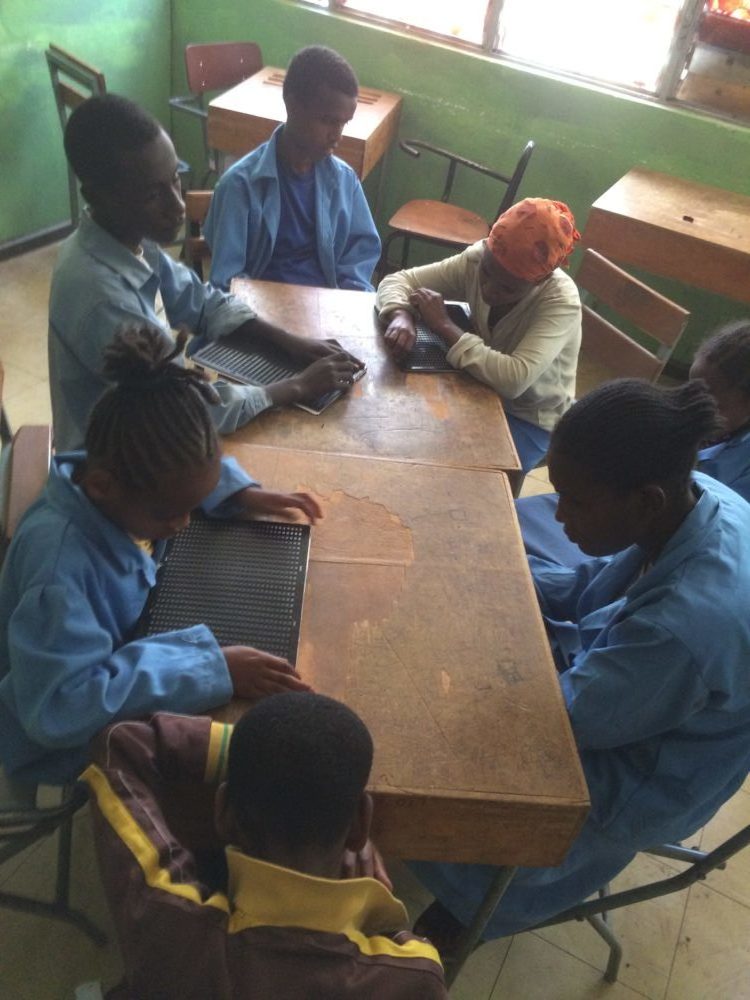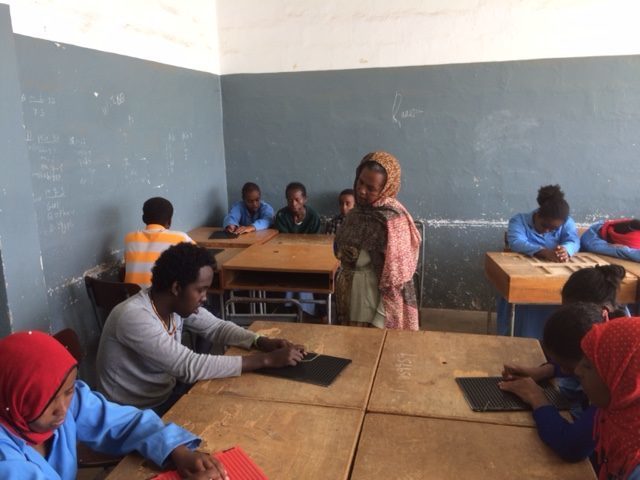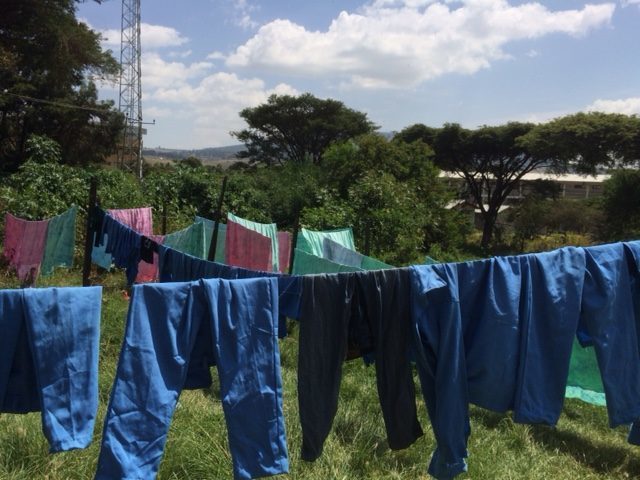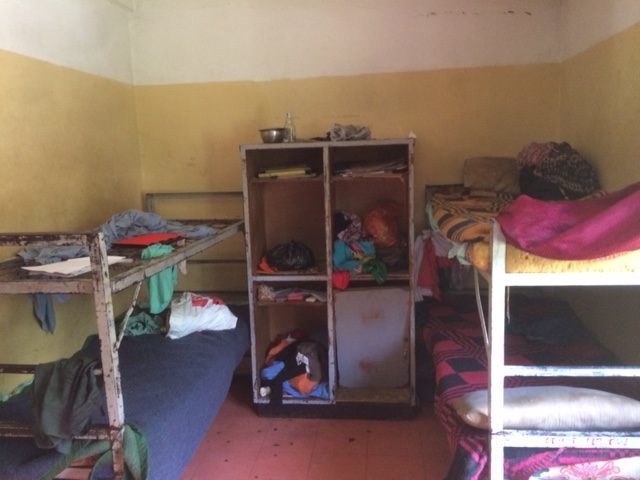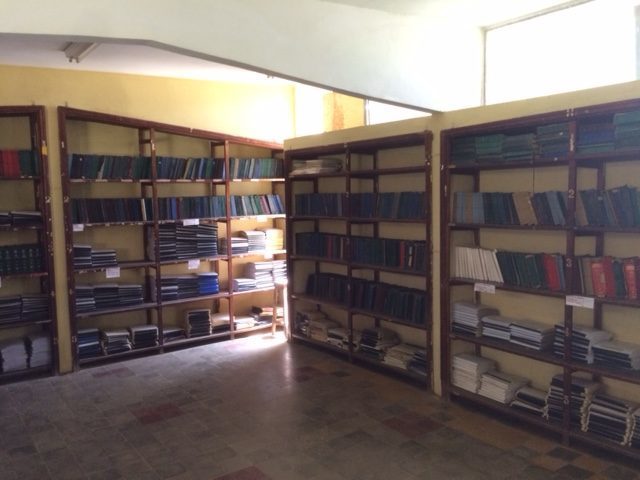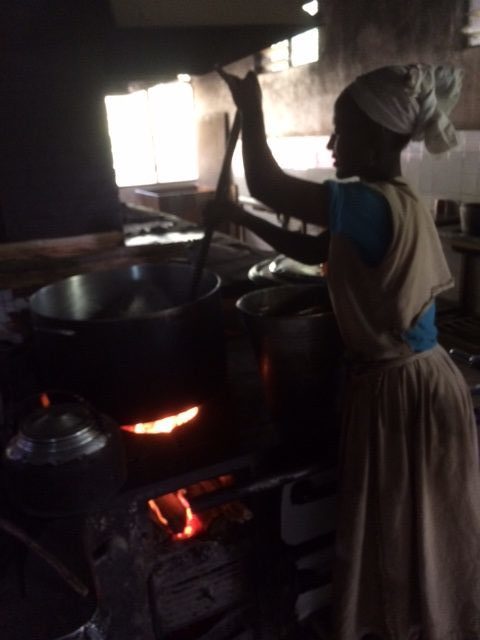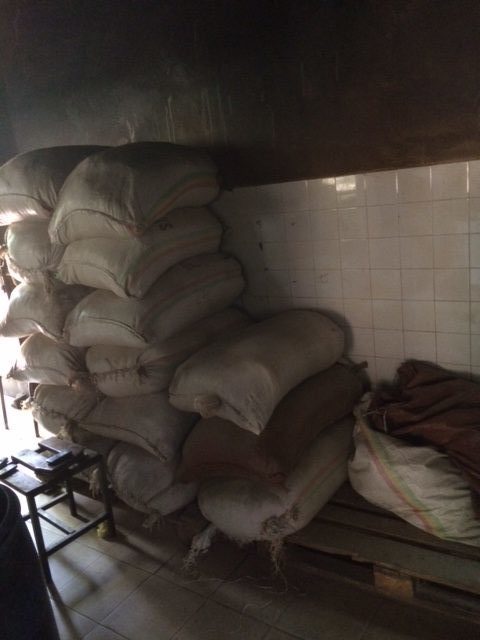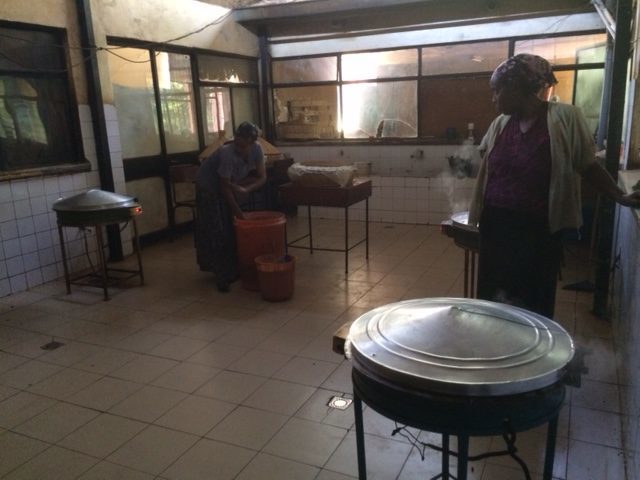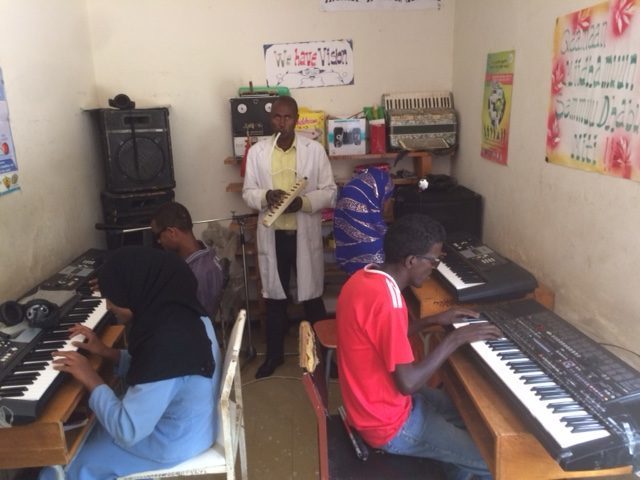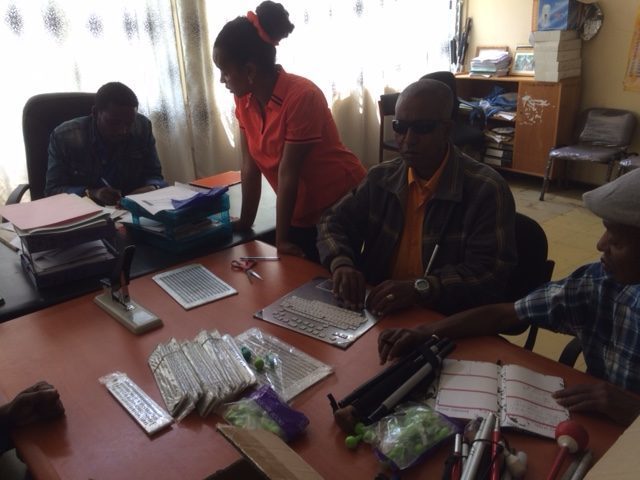On Monday, October 24th, I traveled with Berhanu, Tsehay, and Tafesse from Zena Wengal Ministries to the school for the blind in Sebeta. The bulk of the materials I had collected to donate were to go there. The blue star on the map pictured is the approximate location of the school compound.
So, I packed all the supplies up in a box, inflated the soccer balls, and we headed out this morning at about 9:00 AM. Everyone wanted to go early so we’d have plenty of time to get back before the curfew. On the map, it looks like it’s a 10 minute drive from the edge of the city, but it’s more like an hour. Soooooo many donkeys on the road! I also started to see mostly signs in Oromifa. Still looks like Addis, but with fewer tall buildings and a lot more trees.
The school itself is in a large wooded compound. Very nice. They had a tactile map. The buildings though were all built in the late 60s and so it’s pretty run down. This is the only school for the blind run by the government. There are a handful of other smaller ones around the country run by churches.
We met with the director and his assistant and one of the teachers there and told them all about what were were doing and how we wanted to help, but also how we would follow up to make sure things were being put to good use and if possible, arrange for more assistance in the future. The director is pretty new, a young man who grew up in Sebeta. The assistant is a young lady. About half the teachers are blind themselves as far as I can tell.
We visited several classes that were going on. A couple were being taught in Oromifa, and one in Amharic. There were tons of blind kids, both younger and older walking around the whole time. They mostly lock arms and travel in groups of two or three. About half had a cane of some sort, but it was usually just a stick or straight cane with the bottom snapped off.
In the classrooms, they used these large full-size slates. The problem was, each classroom had only two or three available, so the other kids sat around with nothing to do but listen, until it was their turn with it. In class, the kids seemed really bored. Outside, they were typically chatty. One group of girls was listening to Amharic pop music on her cell phone. Another group of older boys was laughing and joking. Some little girls were playing a game. Some kids the same age as my youngest son were playing soccer. Here is a video:
A lot of the kids wore blue uniforms. It seemed like a few had some light perception, but the bulk of them were completely blind. There were two girl’s dorm buildings and three boys ones. Each held about 40 kids.
We also visited the library, which had a wide range of oldy moldy stuff all the way to some very new books in English. I saw some stuff from Lutheran Braille Workers in there, though it was mostly secular textbooks. There was also a computer room that had some giant magnifier screens, for the “partials” as they called them. Didn’t see any Perkins braillers, but they said there were a couple in one of the older kid’s classrooms. Supposedly there is a closet somewhere with a ton of broken ones in it. (I spoke to Berhanu about training some blind person who is handy with tools to be able to fix them and keep ’em running perpetually in the country. This can be their source of income too.)
One of the craziest things, that I didn’t expect, was the kitchen. They used a hot wood-fired stove and a gal was making shiro wat in a huge caldron. In the next room, several ladies were making injera. There were huge sacks of teff in the corner. It was really smokey!
We also visited a music classroom where a blind teacher was having some kids work on their scales on some electric keyboards. There was a line of kids at the door as they took turns as there were only 4 keyboards.
You could always tell Muslim girls because of the headscarves. About 15% of them were Muslim as far as I can tell.
After the tour we went back in and I showed them all the stuff and they tried them out. I showed them how to cut the canes to length. We didn’t end up handing them out to individual kids that day, but Tafesse is going to follow up on it all in a few weeks. One of the teachers was especially enthusiastic about your magnetic math board. He had never seen anything like it and said it could be really handy. Hopefully the slates make it into classrooms right away.
The woman that teaches cane mobility was unfortunately in a car accident last week and was not there. She is at home healing up though and should be ok eventually. Berhanu will check in with her later.
In the future, several of them agreed that the full-size slates would be the most useful. We took pics of a couple of them to follow up. They are made by some company in India and though they are plastic, seem to work pretty well.
A few facts I learned. Most of the teachers there make the same as other government school teachers, about $100/month. The director makes about $200/month. The kids stay in the dorms until they pass grade 6. (The ages are all over the place, it’s pretty mixed). Then they have to live outside the compound and are given a $20/month stipend. Most of them group up and find a small apartment to rent. After they pass grade 8, then they can go on to study at the regular high school in town. Only the most clever can cut it because at that point, they are thrown in with all the sighted kids. A handful go on to university.
It was definitely interesting and it felt really nice to have something obviously useful to give. What a contrast most of the kids were to Abi, who is super well-adjusted and normal and with sit-up-straight good manners and bright personality! There were a few go-getters here and there though. I think some of the kids end up doing well by force of will despite the poor conditions.
I talked to Berhanu and company (Tafesse and Tsehay) about a lot of the stuff my wife is most concerned about – how it is better to meet people where they live and educate them and their families there rather than gather them together and take them somewhere else centrally. They heartily agreed and said that they aren’t really interested in starting another blind school, although that could probably still be useful in some places at as there are so few currently. I told them about Beverly at Global Cane Outreach doing the rural cane crash courses and you wanting to figure out how to do something similar with braille literacy and they though that sounded really great. Taffesse is the evangelist of course, so he is always looking at it from a gospel delivery standpoint and giving people hope, where as Berhanu is more thinking about economics and mechanics.
This cool painting was hanging up in the office.

